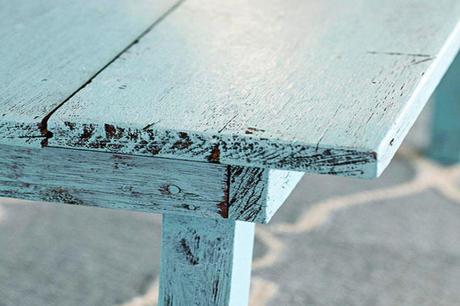
At first thought, one could argue that the whole idea of distressing furniture is silly. Why would someone want to intentionally destroy or change their furniture to make it look less than perfect, old, and rustic? Truth is, distressed furniture is the ‘new’ look.

What is this new distressing technique that has become so popular? Distressed is an attractive style that gives off a vintage look. And if you are into the whole vintage style thing, you’re in luck, because we have listed out the techniques you can follow to distress your own bathroom cabinet or vanity!
Can My Bathroom Cabinets be Distressed?
If you are moving into a new and empty house that you have to furnish from the ground up (and you have the budget for it), by all means, go ahead and buy already distilled bathroom cabinets or vanities! In most cases, however, you already have bathroom cabinets in place but want to give it more of a “weathered look”.

Keep in mind, that if you are looking for a quick turnaround, this may not be the project for you; distilling furniture can be time-consuming… but rewarding! Distressing can be applied to a variety of surfaces and materials! So whether you have wood, glass, metal, plastic, stone, concrete, plaster, or paint, you can follow these steps and get the look you want.
Techniques Used to Distress Furniture
There are different approaches to distressing furniture, including sanding technique, candle technique, wet paper technique, dry brush technique, scraper technique, rinsing technique, woodblock technique, and pouring paint technique. Sometimes the technique you use will depend on the material of your furniture because there are techniques specific to each.
The 3 most popular techniques to distress furniture, however, are:
- Wet Distressing- Popular technique for layering colors
- Dry Distressing- Good technique for single-color use
- The Resist Technique- This technique creates a chippy paint look

Wet Distressing
- Use a lightly damped (lint-free) cloth and start rubbing on the areas you would like to remove paint and distress. This technique works well with a freshly painted item. Designed Decor advises using baby wipes to wet distress. They claim it works great because they have the perfect amount of moisture.
Dry Distressing
- Apply one coat (or two) of paint to your piece and then let it dry completely. Wait about 1-2 hours until the paint is dry before touching it! Once it’s dry, you can distress it with fine-grit sandpaper of your choice. Note, the higher the grit number, the finer the sandpaper.
Resist Distressing
- Paint your base coat and let dry completely. Designed Decor advises not to paint the entire item in the base coat, only the areas you want to distress. This saves time and money on paint products. Apply the oil-based product of your choice to the areas on the item that you want to distress.
If you feel stuck or lost, Country Chic Paint has great in-debt tutorials and videos on these techniques. Here’s an example from them on how to distress using the resist method:
Materials Needed
Shopping for materials can be an overwhelming task. Luckily, distressing furniture yourself only requires a few materials! Depending on which technique you choose to go with, you will need the following materials and tools:
- Vaseline
- Beeswax,
- Candle wax — or any type of oil-based products.
- Sandpaper
- Paint
- Paintbrushes (or rollers)
- Polyurethane
- Candle
- Steel wool
- Drop cloths
- Rags
Stain and baby wipes are optional things you may also choose to get before getting started.

Source
Regardless of which technique you choose to go with, Ananda mentions a few basic tips that you can apply to all techniques:
- If the surface you are painting on has been finished with sealer, wax, or lacquer, it would be helpful to sand it a little so the new paint will adhere better.
- Don’t be afraid to mess up: you can always paint things over or sand spots to make it look better.
- Practice on some scrap wood or on less visible spots, for example, the interior face of a cabinet door, before working on a big piece.
She also mentions a few other techniques that you may choose to go with. On the contrary, if you would like to outright buy distressed furniture, we’ve got you covered! Trade Winds Imports prides itself in its quality of furniture. Search our styles farmhouse or antique to find the style you’re looking for. We also carry Woodland, which we believe to be the best distressing brand in the market. Good luck, and distress away!
